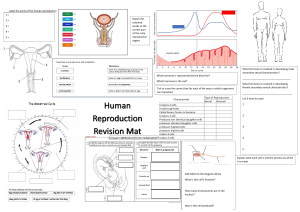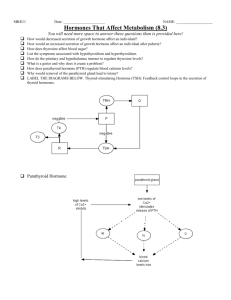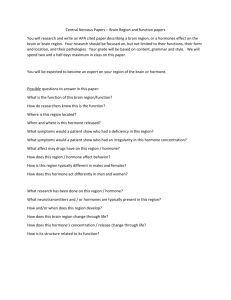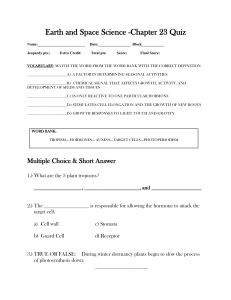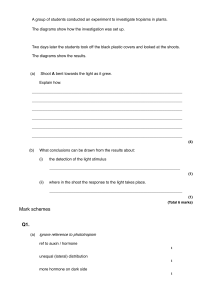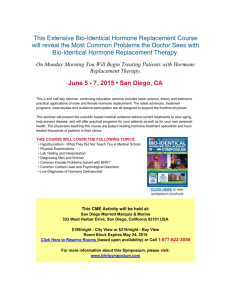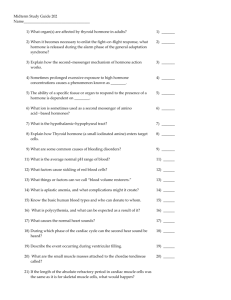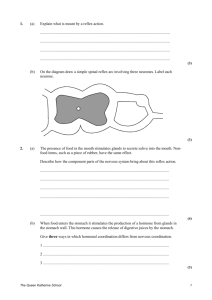Biology Worksheet: Control and Coordination - Grade 10
advertisement
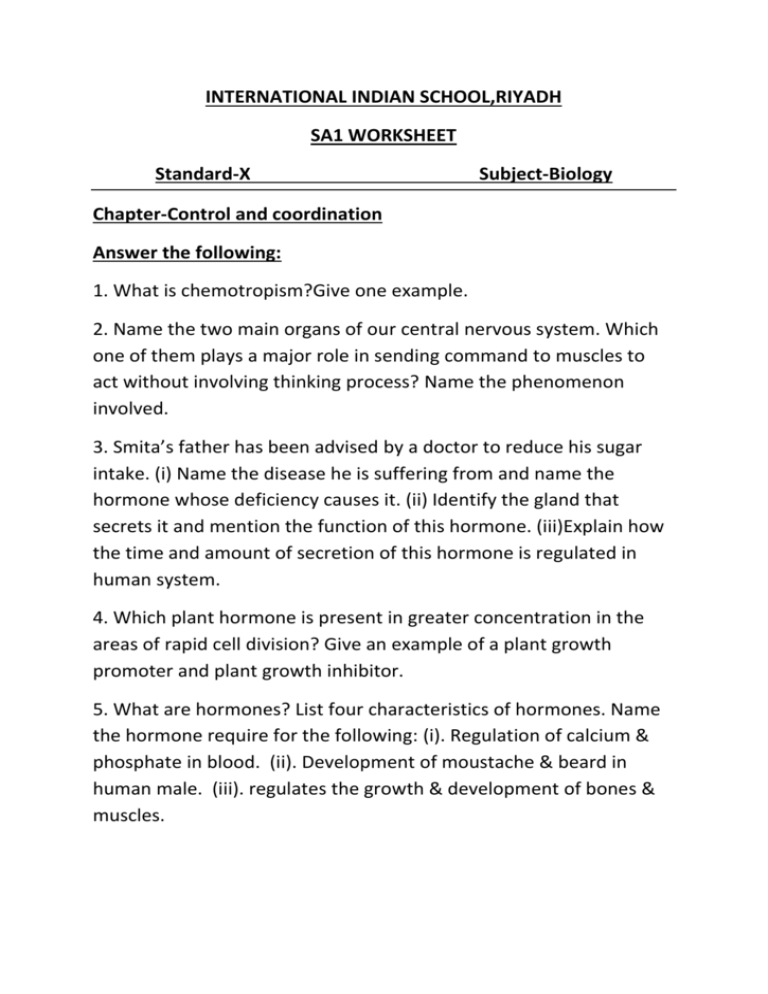
INTERNATIONAL INDIAN SCHOOL,RIYADH SA1 WORKSHEET Standard-X Subject-Biology Chapter-Control and coordination Answer the following: 1. What is chemotropism?Give one example. 2. Name the two main organs of our central nervous system. Which one of them plays a major role in sending command to muscles to act without involving thinking process? Name the phenomenon involved. 3. Smita’s father has been advised by a doctor to reduce his sugar intake. (i) Name the disease he is suffering from and name the hormone whose deficiency causes it. (ii) Identify the gland that secrets it and mention the function of this hormone. (iii)Explain how the time and amount of secretion of this hormone is regulated in human system. 4. Which plant hormone is present in greater concentration in the areas of rapid cell division? Give an example of a plant growth promoter and plant growth inhibitor. 5. What are hormones? List four characteristics of hormones. Name the hormone require for the following: (i). Regulation of calcium & phosphate in blood. (ii). Development of moustache & beard in human male. (iii). regulates the growth & development of bones & muscles. 6. Define Nerve impulse. Which structure in a neuron helps to conduct a nerve impulse? (i). towards the cell body. (ii). away from the cell body. 7. What is reflex action? Give its two examples. Illustrate the pathway followed by a message from the reflex arc. 8. “There is a need for a system of control and coordination in an organism” .Justify the statement? 9. Name the three major regions of the human brain. Which part of the brain (i). Maintains posture and equilibrium of the body. (ii) Regulates respiration. 10. Which animal or plant hormone is associated with the following (i) inhibits growth of plants (ii) rapid development of fruits (iii) dwarfism (iv) goitre. 11. What causes a tendril to encircle or coil around the object in contact with it is? Explain the processes involved. 12. Name the hormone synthesised at the shoot tips. How does it help the plant to respond to light?
